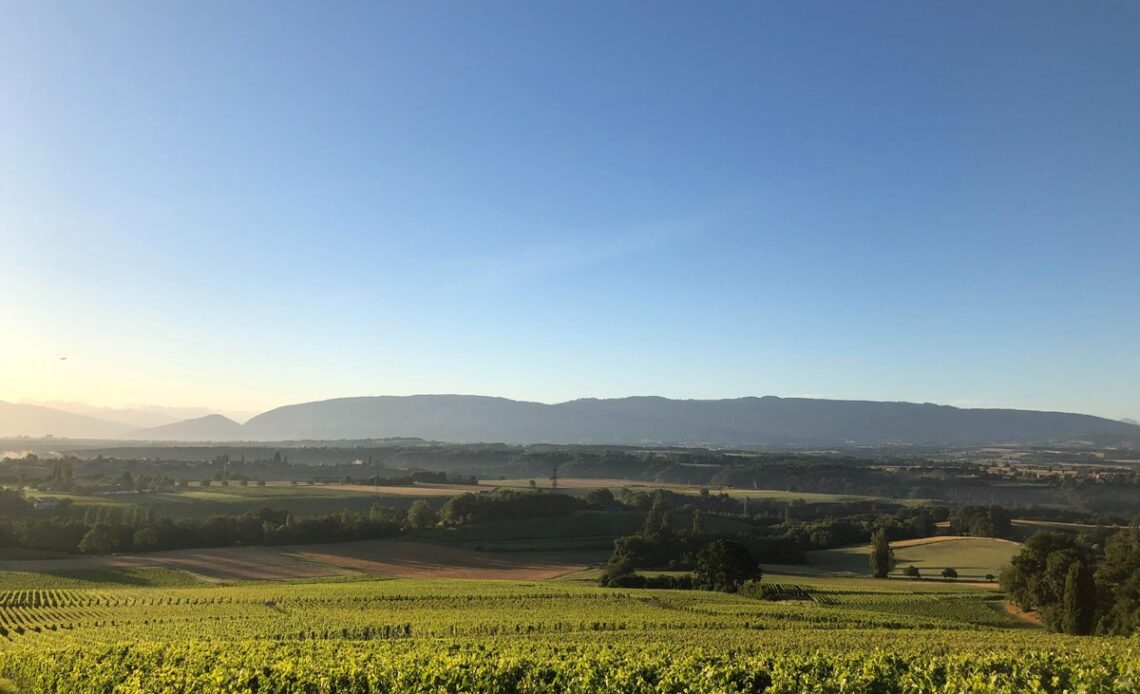It’s 11am on a sunny Saturday morning and I’m sipping a cold glass of Chasselas in a tranquil Swiss village a cork’s pop away from the French border. The only sound is the light breeze rustling in the tall trees lining this quiet country road and the occasional bleating of a nearby bird. In the distance sits the colossal Mont Blanc, Europe’s highest mountain; in the opposite direction, I can glimpse the verdant Jura Mountains. Life feels good.
I’m around 12km from central Geneva in a place called the Dardagny region. Situated on the southwestern banks of Lake Geneva, this vast plateau has been home to Switzerland’s third-largest wine producing canton for centuries. And if you haven’t heard of it? Well, that’s just how the Swiss like it.
Contrary to its Italian and French neighbours, this central European nation’s wine industry remains one of its best-kept secrets. Only around 1 per cent of the wine produced here is exported, meaning very few people outside of the country get to try it, let alone know about it. But don’t make the mistake of thinking this is a small-scale enterprise: Switzerland ranks 10th in the world in terms of vineyards-to-country surface-area ratio, produced 100m litres of wine in 2018, and comes fourth globally in annual wine consumption per capita.
The wine tuk tuk tour offers a unique experience
(Visit Geneva)
Determined to sample some of this exclusive tipple for myself, I leave the city centre and head for the hills. While it’s possible to reach Dardagny by bicycle in about an hour, we take the responsible approach and opt for a tuk tuk tour. Cast aside all harrowing memories of white-knuckle-rides through polluted city streets, however: our electric-powered chariot, which has a maximum speed of 45km, has space for four passengers, a canopy, thick woollen blankets to keep cosy, seatbelts and a central table with designated slots for your wine glass. Our congenial driver swings by a local fromagerie to collect a charcuterie board to help soak up the booze, and we’re off.
And what a civilised excursion it is. We’re quickly meandering along quiet country roads and climbing up past yellow fields of rapeseed, goats with tinkling bells and sweeping vineyard panoramas. Dardagny itself is an ISOS, or Swiss Heritage Site of National Importance – an accolade awarded in 1978 for the development and preservation of its architectural heritage – and was immortalised by the 17th century landscape and portrait painter…
Click Here to Read the Full Original Article at The Independent Travel…
